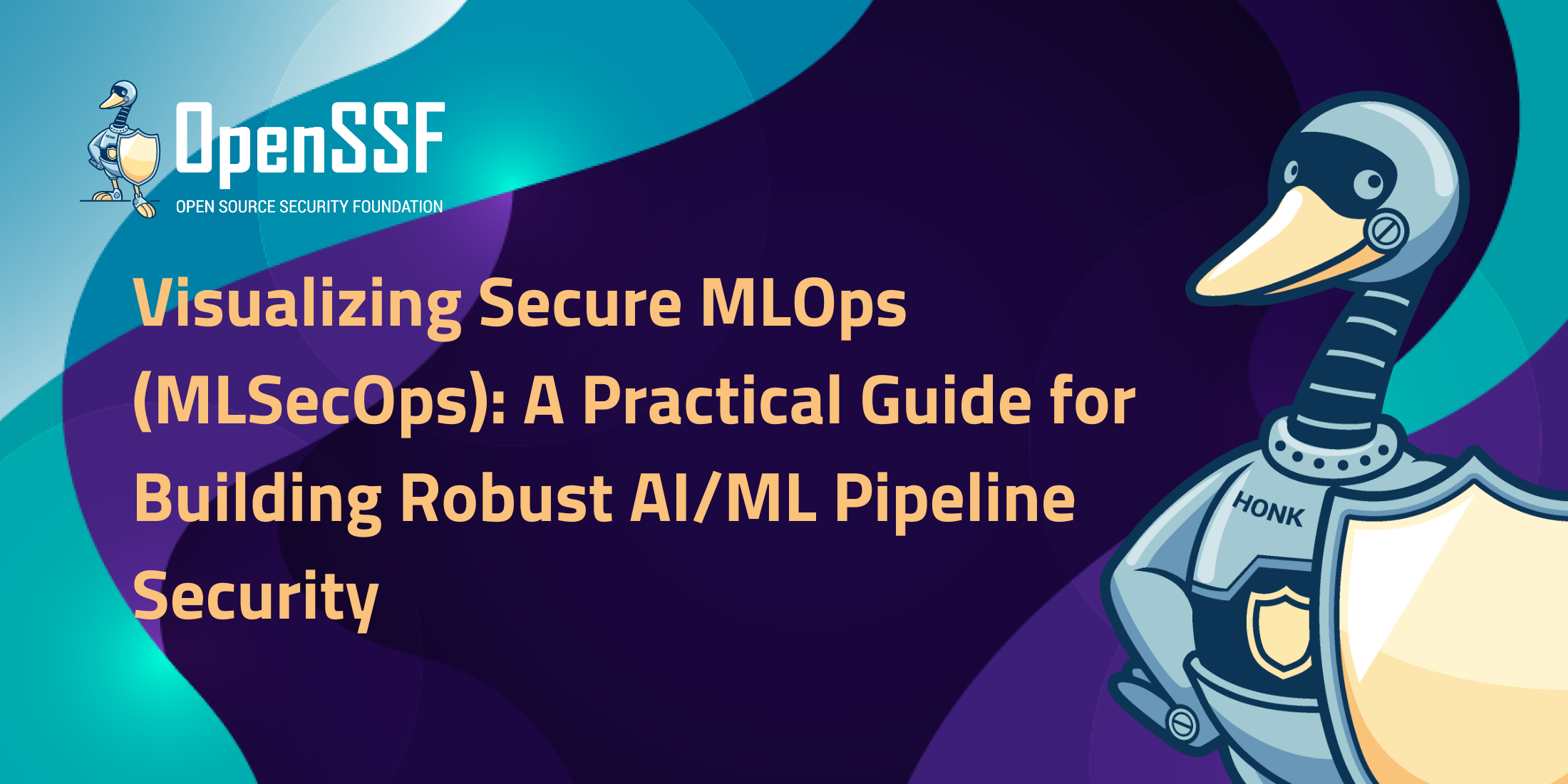
By Sarah Evans and Andrey Shorov
The world of technology is constantly evolving, and with the rise of Artificial Intelligence (AI) and Machine Learning (ML), the demand for robust security measures has become more critical than ever. As organizations rush to deploy AI solutions, the gap between ML innovation and security practices has created unprecedented vulnerabilities we are only beginning to understand.
A new whitepaper, “Visualizing Secure MLOps (MLSecOps): A Practical Guide for Building Robust AI/ML Pipeline Security,” addresses this critical gap by providing a comprehensive framework for practitioners focused on building and securing machine learning pipelines.
Why MLSecOps, Why Now
Why this topic? Why now?
AI/ML systems encompass unique components, such as training datasets, models, and inference pipelines, that introduce novel weaknesses demanding dedicated attention throughout the ML lifecycle.
The evolving responsibilities within organizations have led to an intersection of expertise:
- Software developers, who specialize in deploying applications with traditional code, are increasingly responsible for incorporating data sets and ML models into those applications.
- Data engineers and data scientists, who specialize in data sets and creating algorithms and models tailored to those data sets, are expected to integrate data sets and models into applications using code.
These trends have exposed a gap in security knowledge, leaving AI/ML pipelines susceptible to risks that neither discipline alone is fully equipped to manage. To resolve this, we investigated how we could adapt the principles of secure DevOps to secure MLOps by creating an MLSecOps framework that empowers both software developers and AI-focused professionals with the tools and processes needed for end-to-end ML pipeline security. During our research, we identified a scarcity of practical guidance on securing ML pipelines using open-source tools commonly employed by developers. This white paper aims to bridge that gap and provide a practical starting point.
What’s Inside the Whitepaper
This whitepaper is the result of a collaboration between Dell and Ericsson, leveraging our shared membership in the OpenSSF with the foundation stemming from a publication on MLSecOps for telecom environments authored by Ericsson researchers [https://www.ericsson.com/en/reports-and-papers/white-papers/mlsecops-protecting-the-ai-ml-lifecycle-in-telecom]. Together, we have expanded upon Ericsson’s original MLSecOps framework to create a comprehensive guide that addresses the needs of diverse industry sectors.
We are proud to share this guide as an industry resource that demonstrates how to apply open-source tools from secure DevOps to secure MLOps. It offers a progressive, visual learning experience where concepts are fundamentally and visually layered upon one another, extending security beyond traditional code-centric approaches. This guide integrates insights from CI/CD, the ML lifecycle, various personas, a sample reference architecture, mapped risks, security controls, and practical tools.
The document introduces a visual, “layer-by-layer” approach to help practitioners securely adopt ML, leveraging open-source tools from OpenSSF initiatives such as Supply-Chain Levels for Software Artifacts (SLSA), Sigstore, and OpenSSF Scorecard. It further explores opportunities to extend these tools to secure the AI/ML lifecycle using MLSecOps practices, while identifying specific gaps in current tooling and offering recommendations for future development.
For practitioners involved in the design, development, deployment, and operations as well as securing of AI/ML systems, this whitepaper provides a practical foundation for building robust and secure AI/ML pipelines and applications.
Join Us
Ready to help shape the future of secure AI and ML?
Join the AI/ML Security Working Group
Author Bios
 Sarah Evans delivers technical innovation for secure business outcomes through her role as the security research program lead in the Office of the CTO at Dell Technologies. She is an industry leader and advocate for extending secure operations and supply chain development principles in AI. Sarah also ensures the security research program explores the overlapping security impacts of emerging technologies in other research programs, such as quantum computing. Sarah leverages her extensive practical experience in security and IT, spanning small businesses, large enterprises (including the highly regulated financial services industry and a 21-year military career), and academia (computer information systems). She earned an MBA, an AIML professional certificate from MIT, and is a certified information security manager. Sarah is also a strategic and technical leader representing Dell in OpenSSF, a foundation for securing open source software.
Sarah Evans delivers technical innovation for secure business outcomes through her role as the security research program lead in the Office of the CTO at Dell Technologies. She is an industry leader and advocate for extending secure operations and supply chain development principles in AI. Sarah also ensures the security research program explores the overlapping security impacts of emerging technologies in other research programs, such as quantum computing. Sarah leverages her extensive practical experience in security and IT, spanning small businesses, large enterprises (including the highly regulated financial services industry and a 21-year military career), and academia (computer information systems). She earned an MBA, an AIML professional certificate from MIT, and is a certified information security manager. Sarah is also a strategic and technical leader representing Dell in OpenSSF, a foundation for securing open source software.
 Andrey Shorov is a Senior Security Technology Specialist at Product Security, Ericsson. He is a cybersecurity expert with more than 16 years of experience across corporate and academic environments. Specializing in AI/ML and network security, Andrey advances AI-driven cybersecurity strategies, leading the development of cutting-edge security architectures and practices at Ericsson and contributing research that shapes industry standards. He holds a Ph.D. in Computer Science and maintains CISSP and Security+ certifications.
Andrey Shorov is a Senior Security Technology Specialist at Product Security, Ericsson. He is a cybersecurity expert with more than 16 years of experience across corporate and academic environments. Specializing in AI/ML and network security, Andrey advances AI-driven cybersecurity strategies, leading the development of cutting-edge security architectures and practices at Ericsson and contributing research that shapes industry standards. He holds a Ph.D. in Computer Science and maintains CISSP and Security+ certifications.